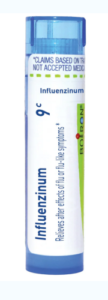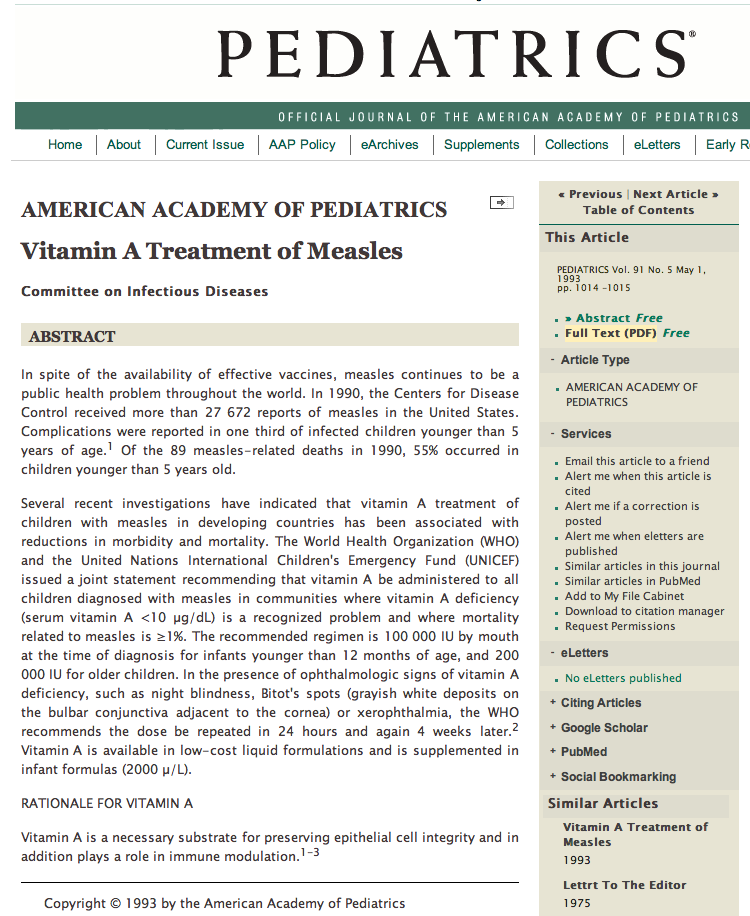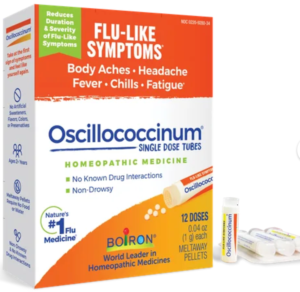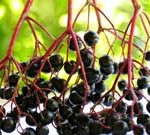Did you know that there a safer Homeopathic sublingual alternative to the Flu jab?
In 1998 the French Society of Homeopathy conducted a survey of 23 homeopathic doctors concerning their use of Influenzinum for the prevention of the flu (Coulamy, 1998). The survey included use of Influenzinum over a 10 year period (1987-1998) in 453 patients. Results of the survey were remarkable. In approximately 90 percent of the cases no instances of the flu occurred when Influenzinum was used preventively for all ages 2 and older. In the survey, no side effects were noted in 97% of the cases, while 3% experienced mild nasal discharge. Influenzinum has been used throughout the world by millions of people for decades.

CDC Recommending Broad use of Ineffective Anti-viral Drugs
In addition to ineffective and toxic vaccines, the CDC often recommends the use of expensive antiviral drugs (neuraminidase inhibitors like Tamiflu) as soon as possible if nfluenza is suspected, without waiting for laboratory confirmation of the diagnosis, because they are ineffective if not started within 48 hours of exposure.[1,3] However, “If one looks at data from people who had influenza (the only group who could benefit), there was [only] a 1.25- to 1.5-day difference in median time to symptom improvement and somewhat greater benefit in ability to return to work.”[7] These anti-viral drugs have significant side-effects, including nausea and vomiting in 10% of patients.
The Centers for Disease Control and Prevention (CDC) acknowledges that the influenza vaccine effectiveness varies from as low as 23% to 84% at best. Many people are not surprised. Because epidemiologists have to guess at which flu strain to put in each year’s vaccine at least 9 months before the next flu season actually arrives, they often guess wrong. Despite the dismal protection provided by this season’s influenza vaccine, the CDC continues to urge everyone 6 months of age or older to get this year’s vaccine.
Does the Flu Vaccine Protect the Very Young and Elderly?
Much of the pressure to vaccinate is to very young and the elderly, who we have been told are the most at risk and would benefit the most from the vaccine. However, systematic review and meta-analysis[4] have found that in spite of the widespread belief to the contrary, children younger than 5 years were at lower risk for death, hospital admission, and need for ventilator support than older children, although they were at a higher risk of developing pneumonia. They also found that children younger than 2 years of age were at significantly lower risk for admission to the hospital or intensive care, and of requiring ventilator support, compared with all other age groups.[4]
Vaccinated Children Have 3 Times Higher Risk of Hospitalization
The influenza vaccine does not appear to be effective in preventing influenza-related hospitalizations in children either, especially the ones with asthma. In fact, children who get the flu vaccine are at 3 times higher risk for hospitalization than their peers who do not get the vaccine, according to new research that was presented on May 19, 2009, at the 105th International Conference of the American Thoracic Society. The study found that in asthmatic children, there was a significantly higher risk of hospitalization in those children who had received the Vaccine as compared to those who did not.
Influenza Vaccine Does Not Prevent the Flu in the Elderly
In a review of 64 studies over 98 flu seasons of elderly living in nursing homes, flu shots were non-significant for preventing the flu. For elderly living in the community, vaccines were not (significantly) effective against influenza, Influenza Like Illness (ILI) or pneumonia. Reference: “Vaccines for preventing influenza in the elderly.” The Cochrane Database of Systematic Reviews. 3 (2006). A randomized trial showed the effectiveness of vaccination against laboratory confirmed clinical influenza to be 58%. (JAMA. 1994;272(21):1661-1665)
Most adults and children with influenza will recover in 1-2 weeks, but children younger than 5 years are most likely to be taken to the emergency department (ED) for care.[5] However, only a small proportion will develop complications, either resulting directly from the viral infection or from a host-related factor, such as an underlying chronic disease. Children with neurologic/neuromuscular disease or cardiac disease are at highest risk of requiring prolonged hospitalization with influenza.[6]
Children and adults with special health conditions need special attention and immune support, but vaccinating the entire population is not the most effective method and subjects the rest of the entire population to serious risks from the vaccines.
Natural Treatment of the Flu with Vitamin A
“There is a better, more effective, all natural treatment that used to be recommended by the World Health Organization and the American Academy of Pediatrics before the CDC and Big Pharma began pushing vaccines on everyone: Vitamin A.” See the Pediatrics article from 1993 posted below.

The most effective treatment for preventing the most serious consequences of the Flu is the supplementation of Vitamin A. Although the CDC and Public Health Officials never seem to mention this simple remedy, it has been used with astounding benefits around the world in the treatment of the Measles Virus.
Naturopathic Physicians, as well as The World Health Organization and the American Academy of Pediatrics recommend Vitamin A for all children with acute upper respiratory viral infections, to reduce the risk of complications, including pneumonia. Vitamin A is a necessary substrate for preserving epithelial cell integrity of the lungs and wind pipes and in addition plays a major role in immune enhancement.
Using two doses of vitamin A (200,000 IU) on consecutive days has been shown to be associated with a 82% reduction in the risk of mortality in children under the age of two years (RR 0.18; 95% CI 0.03 to 0.61) and a 67% reduction in the risk of pneumonia-specific mortality (RR 0.33; 95% CI 0.08 to 0.92).
Source: Vitamin A for treating measles in children. Cochrane Database Syst Rev. 2005 Oct 19;(4):CD001479. American Academy of Pediatrics
Vitamin A should be administered once a day for 2 days at the following doses:
• 50,000 IU for infants aged <6 months
• 100,000 IU for infants aged 6–11 months
• 200,000 IU for children aged ≥12 months
An additional (third) age-specific dose of vitamin A should be given 2–4 weeks later to children with clinical signs and symptoms of vitamin A deficiency. Parenteral and oral formulations of vitamin A are available in the United States. (Source: CDC, updated 12/13/13)
Dr. Hansen Recommends that adults, aged 18+ take 200,000iu once daily for 2 days every month during the winter to boost the immune system.
Other Natural Remedies for Symptoms of the Flu
If you should get the flu, Dr. Hansen recommends taking Oscillococcinum (os-sill-o-cox-see-num) the homeopathic medicine developed in France more than 60 years ago for the treatment of flu symptoms. Oscillococcinum is the number one over-the-counter flu medication in France. It has been used by more than 10 million people worldwide every year without any side-effects. It helps stop the fever, chills, body aches and pain of the Flu within a few short hours. I have used it with dramatic results in my practice for more than 20 years.

Elderberry Extract shown to work faster than Antiviral drugs!
An extract of Elderberry fruit has been shown to be more effective than prescription neuraminidase inhibitors like Tamiflu and Oseltamivir. In a double blind clinical trial on patients infected with the influenza virus, 90% of the group taking Elderberry extract recovered completely from the fever, chills, body aches, and cough twice as fast as the group receiving the placebo (within 3 days rather than 7).

Elderberry disarms viruses by binding to them and preventing them from getting into the body. Flavonoids found in the berries are thought to coat the virus and inhibit the action of an enzyme called neuraminidase that otherwise would break down the cell wall membrane and allow the virus to spread. Elderberry also enhances immunity by increasing the production of special white blood cells that fight viruses and acts as a potent antioxidant. Dr. Hansen formulated an Elderberry containing extract called Phytobiotic, which can be taken by adults and children who can swallow pills. Elderberry extract can also be found in liquid form for children who cannot swallow pills.
Sources: J Int Med Res. 2004 Mar-Apr;32(2):132-40.Randomized study of the efficacy and safety of oral elderberry extract in the treatment of influenza A and B virus infections;
J Altern Complement Med.1995 Winter;1(4):361-9. Inhibition of several strains of influenza virus in vitro and reduction of symptoms by an elderberry extract (Sambucus nigra L.) during an outbreak of influenza B Panama.
References
- Flannery B,Clippard J, Zimmerman RK, et al. Early estimates of seasonal influenza vaccine effectiveness—United States, January 2015. MMWR Morb Mortal Wkly Rep. 2015;64:10-15.Abstract
- Grohskopf LA,Olsen SJ, Sokolow LZ, et al; Centers for Disease Control and Prevention. Prevention and control of seasonal influenza with vaccines: recommendations of the Advisory Committee on Immunization Practices (ACIP) —UnitedStates, 2014-15 influenza season. MMWR Morb Mortal Wkly Rep. 2014;63:691-697. Abstract
- Centers for Disease Control and Prevention. CDC health update regarding treatment of patients with influenza with antiviral medications. anuary9, 2015. http://emergency.cdc.gov/HAN/han00375.asp Accessed January18, 2015.
- Mertz D, Kim TH, Johnstone J, et al. Populations at risk for severe or complicated influenza illness: systematic review and meta-analysis. BMJ. 2013;347:f5061.
- Fiore AE, Shay DK, Broder K, et al; Centers for Disease Control and Prevention (CDC); Advisory Committee on Immunization Practices (ACIP). Prevention and control of influenza: recommendations of the Advisory Committee on Immunization Practices (ACIP), 2008. MMWR Morb Mortal Recomm Rep. 2008;57:1-60.
- Coffin SE, Zaoutis TE, Rosenquist AB, et al. Incidence, complications, and risk factors for prolonged stay in children hospitalized with community-acquired influenza. Pediatrics. 2007;119:740-748. Abstract
- HernanMA,LipsitchM.Oseltamivirandriskoflowerrespiratorytractcomplicationsinpatientswithflusymptoms:ameta-analysis of eleven randomized clinical trials. Clin Infect Dis. 2011;53:277-279.Abstract

